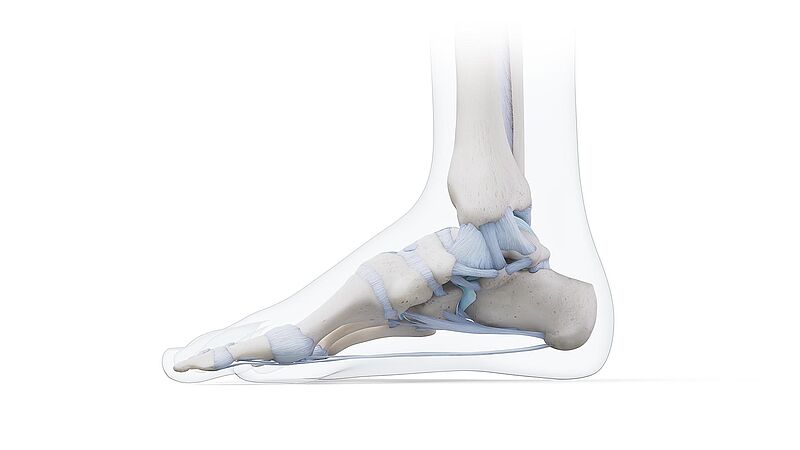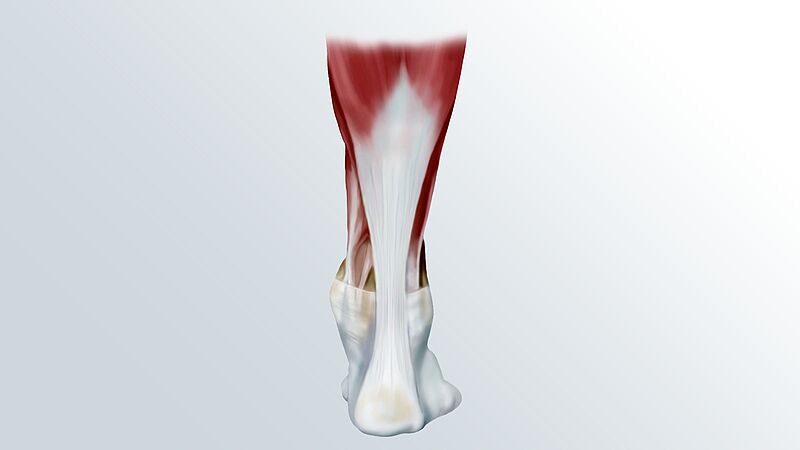
Anatomy: Structure of the ankle joint
Fascinating anatomy: The ankle is divided into the upper and lower ankle joint. The upper ankle joint consists of the tibia, fibula and talus. The lower ankle joint consists of the talus, calcaneus and navicular bone. Various ligaments and tendons connect these five bones and stabilize the joint so that our feet can move us through and we can bend, stretch and move them sideways.
More about the anatomy of the ankle joint
Ankle sprain: Sprained ankle - a common sports injury
An ankle sprain is caused by an unfavorable movement - usually an outward twist (supination trauma). This severely overstretches the joint capsule or the surrounding ligaments and muscles. Symptoms of a sprained ankle include bruising and swelling as well as pain and limited mobility of the joint.
More on sprains of the ankle joint
Torn and stretched ligaments
A torn or stretched ankle ligament is one of the most common injuries. A stretched ligament is generally less serious and usually heals without complications. A torn ligament, on the other hand, can lead to more severe pain, swelling and bruising. In both cases, targeted treatment is important to avoid consequential damage and instability of the ankle joint.
Torn & stretched ligaments - symptoms & treatment
Chronic instability of the ankle joint
An unstable ankle joint often feels wobbly and unsteady, especially when walking on uneven ground or doing sport. Instability is often the result of repeated twisting injuries in which the stabilizing ligaments are overstretched or even torn. If the injury does not heal properly, the joint can lose stability permanently. Find out about early treatment options and targeted training - both can help prevent the instability from becoming chronic.
More on chronic instability of the ankle joint
Ankle fracture! What to do?
An ankle fracture is a typical accidental injury - whether during sport or in everyday life. The type and duration of rehabilitation varies depending on the severity of the ankle fracture. Find out more about the treatment options for a broken ankle and what Weber fractures are all about.
Everything about ankle fractures
Achillodynia: pain in the Achilles tendon
Do you have pain above your heel? Perhaps the area is also overheated and swollen? These could be signs of Achillodynia. This is what doctors call the pain syndrome in the Achilles tendon, which can take on different forms. Find out what causes Achillodynia and how the pain can be successfully treated.
Achillodynia - causes and treatment
Achilles tendon rupture: When the strongest tendon tears
Some athletes have already experienced this: a bang, a fall and then it happens - the Achilles tendon is torn. It is the strongest tendon in the human body - and Running with a torn Achilles tendon is impossible. What happens now? Is an operation necessary? Find out what treatment options are available for a torn Achilles tendon.
What to do if you tear your Achilles tendon?
Supports and orthoses for ankle pain
If the ankle joint is injured, medical aids can provide effective support during rehabilitation. The spectrum is broad: Depending on the diagnosis, there is everything from supports for light support to stable immobilization orthoses.





